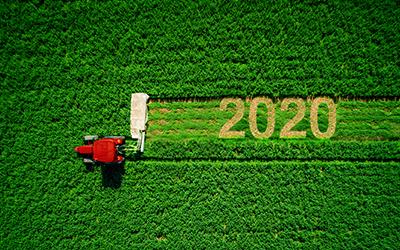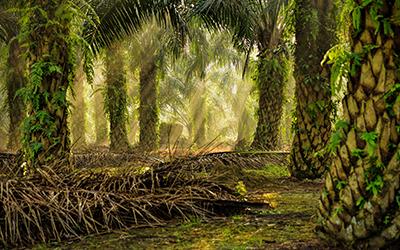
Global food demand & supply, before & after COVID-19
News Room Global food demand & supply, before & after COVID-19 As the novel Coronavirus rapidly spread across six continents, it resulted in several socioeconomic
China’s average crop production has increased by six times in the last four decades. This exponential increase in yield can be attributed to improved soil management and enhanced soil productivity using inputs like fertilizers.
On the other hand, a study conducted in Kansas (USA) indicated that the average corn yield would dip by a massive 60% if the farmers were to reduce their usage of NPK-based fertilizers. A similar study in Oklahoma displayed the same result, that is, a decline of 40% of average crop production, in the case of wheat.
These figures and studies indicate that even though we are moving towards technological intervention and innovation in the farming industry, fertilizers continue to play a significant role in crop production.
Up until the 19th century, the global population increased at a sustainable rate wherein the food production at the time could meet the demands. In localized areas that experienced greater demands, farmers could scale up by cultivating larger farms.
However, the 20th century significantly transformed these dynamics. The global population nearly tripled between 1900 and 1980. At the same time, land resources were also under stress as it was required for non-farming activities. These two factors were a significant threat to food security.
Since increasing cultivable landmass was no longer an option, farmers had to increase their per capita yield. This condition led to the Third Agricultural Revolution, aka the Green Revolution.
To combat the population stress, Wortman and Cummings, Jr., outlined four requisites to increase farm yield regardless of the holding size. These were:
Amongst these four points, the third, that is, the supply of inputs, more specifically, fertilizers became one of the most important factors for increasing yield. By 1979, fertilizers were the most purchased farm inputs.
Interestingly, the high-rate of adoption of fertilizers went hand in hand with the rise in the popularity of the High-Yielding Variety (HYV) seeds. These crops were a result of selective breeding, which imparted to it the high yield potential.
The two primary requirements for the HYV crops were sufficient irrigation and fertilizer inputs. As such, it gave further impetus to the widespread fertilizer adoption. In response to these adaptations, the crop production rate increased rapidly, and the human race was whisked back from the brink of acute food scarcity.
To this date, fertilizer continues to be an essential component of farming in major agriculture-based countries and economies.
Commercial fertilizers are present in various types and forms. Following is a list of the broad categories of fertilizers based on their production process and composition:
Synthetics fertilizers are also known as Mineral or Chemical Fertilizers. These water-soluble fertilizers contain inorganic compounds, such as nitrogen, phosphorus, and potassium, which stimulate the accelerated vegetative and reproductive growth of the plant.
Some common synthetic fertilizers include:
Organic fertilizers are naturally occurring in nature and could be a byproduct of natural processes. These fertilizers also primarily supply NPK. However, their nutritional uptake is rather poor.
The most commonly used organic fertilizers include:
Biofertilizers are also known as microbial inoculants. It is an umbrella term that includes selective microorganisms, such as bacteria, algae, and fungi that may help through processes such as nitrogen fixation. As such, these biofertilizers help transform and mobilize the nutritional elements present in soil from non-usable to usable formats through various biological processes.
Some well-known biofertilizers widely used for nitrogen-fixation are:
Adequate crop nutrition plays a crucial role in maintaining global food supply. As such, farmers would have to continue using fertilizers to get the best results. Hence, it is safe to state that the fertilizer industry will continue to grow.
One may think that animal manure offers the necessary nutrients to support a healthy yield and building the soil. However, the organic matter present in manure is simply not enough and not in sufficient ratio to replace fertilizers. Moreover, the quality of manure heavily depends on the nature of the animal feed.
Hence, even seemingly sustainable forms of farming, such as organic farming, make sparing use of natural and mineral-based fertilizers to meet the nutritional requirements. And even in their case, studies indicate that the nutrient uptake is rather poor, which results in limited yield with poorer nutritional content.
On the other hand, the advent of technology and super crops will mitigate some of the pressure on farming activities. However, it may be unable to keep up with the population boom and increased stress on land, especially in the developing nations. Since such trends are expected to continue, we would be turning to conventional agriculture to prevent a food crisis. Hence, the demand for fertilizers would continue to reach new highs, and resultantly, the fertilizer industry will continue to grow.
As per market analysis carried out by Mordor Intelligence, the global fertilizer industry was valued at $155.80 billion in 2019. It is projected to grow at a CAGR of 3.8% for the forecast period from 2020 to 2025. The Asia Pacific region will continue to dominate the market, with South and East Asia as the largest consumers.
Despite all the buzz surrounding sustainable and organic farming, conventional farming with the use of fertilizers will continue to thrive in the years to come. While the dangers of using fertilizers can seem challenging and discouraging, the drawbacks can easily be mitigated by managed and conscious farming practices. History is witness that fertilizers were successful in rescuing us from the previous food crisis, and it is expected to do the same in the future.

News Room Global food demand & supply, before & after COVID-19 As the novel Coronavirus rapidly spread across six continents, it resulted in several socioeconomic

News Room Farming, beyond 2020 If farming intends to feed the global population, it would have to achieve the rate of growth as delivered by

News Room Everything You Need to Know About Palm Oil Palm oil has often found itself in the eye of the storm of controversy for